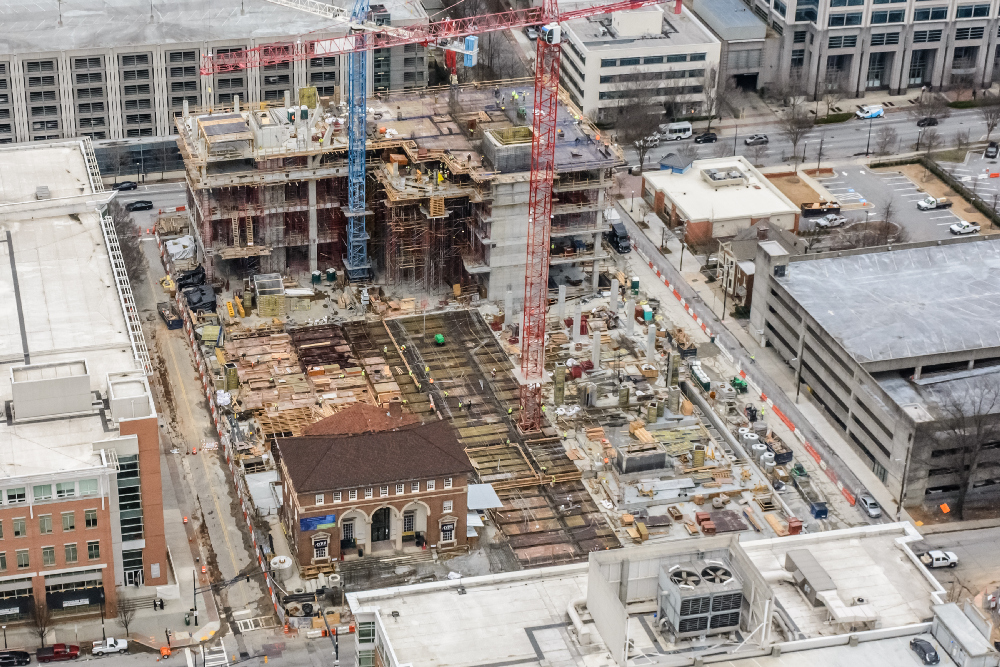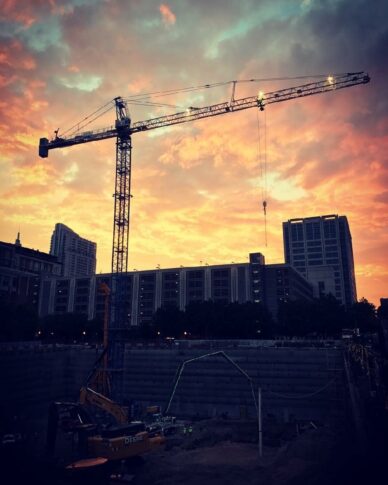
By Robert Pavelka
When it comes to managing and mitigating risks on construction jobsites, few activities require a greater level of awareness or more extensive preplanning than the deployment of cranes.
Whether it is a fixed tower crane that is brought in and assembled on the construction site for use throughout the project, or a mobile crane such as a crawler, hydraulic or vehicle-mounted variety, cranes have long been an essential tool for builders to effectively and efficiently erect their vertical construction projects.
But the consequences of inadequate planning and errors in execution can be dire.
According to the U.S. Bureau of Labor Statistics in its report on fatal occupational injuries involving cranes (most recently released in May 2019), the seven-year period from 2011 to 2017 saw a total of 297 reported crane-related deaths in the U.S., averaging 42 per year. Just over half of all fatal crane injuries involved the worker being struck by an object or equipment, and 43% of fatal crane injuries occurred in the private construction industry.
 High-profile crane accidents in construction are infamous – and continue to be all too common. Among the most publicized accidents, six construction workers and a bystander were killed and 24 workers and first responders were injured in a New York City crane collapse on March 15, 2008. Just a few weeks later, on May 30, another crane fell in that city, killing two construction workers and injuring two others. In 2016, a crane accident on a multistory residential project in Queens killed the crane operator and another construction worker.
High-profile crane accidents in construction are infamous – and continue to be all too common. Among the most publicized accidents, six construction workers and a bystander were killed and 24 workers and first responders were injured in a New York City crane collapse on March 15, 2008. Just a few weeks later, on May 30, another crane fell in that city, killing two construction workers and injuring two others. In 2016, a crane accident on a multistory residential project in Queens killed the crane operator and another construction worker.
Fatal accidents such as these have long pointed to the need for improvements in the industry’s approach to crane safety. They highlight the critical importance of preplanning, verifying and documenting every step of the process well before the crane arrives onsite. This all-inclusive preplanning seeks to mitigate risk from crane operations, from the moment the crane is brought onsite and erected to the time it is dismantled. A comprehensive plan must be made for each and every crane pick on the job, with extra time built in for “critical picks.” No detail is too small.
In 2021, DPR’s Southeast region helped develop a companywide initiative to elevate awareness around the use of cranes. This initiative refined and expanded the already robust process DPR had in place for crane use on its projects. It brought together the company’s national crane team, its national Environmental Health & Safety team and senior superintendents to determine best practices and industry-leading protocols for crane use on every DPR jobsite.
A few of the best practices for crane use that DPR established include the following:
Enhanced planning for critical vs. noncritical picks: Determining and verifying what are noncritical picks versus critical picks and planning accordingly is integral to the preplanning process. A critical pick involves anything over 75% capacity of the crane or over a certain dollar value. Each critical pick requires a highly detailed, written plan by the project superintendent, working in concert with DPR’s EHS team, at least six weeks ahead of the activity. The noncritical pick requires a plan to be in place a minimum of two weeks before the lift.
During this early stage of planning, contractors must verify and document specific logistics that will impact the crane and surrounding site. This requires answering the following questions, among many others:
- What are the access and egress plans for setting up the crane?
- What overhead and underground utilities are in the area?
- Is any ground improvement needed to support the crane?
- Where will the crane be located for the pick, and what is its max radius and boom angle?
- Rigging and boom: what is the weight of the line, and what are the precise metrics for rigging a particular pick?
- After evaluating all facets of the operation: Is this the right crane for the job?
- Has the crane operator’s certification status been verified, and are they familiar with what is being rigged and are proficient with this model crane?
Communication is key: Elevating the communication between crane operators and riggers is essential. The days of the crane operator being known simply as the “guy in the sky” are over. To promote the smoothest running operations, the operator, rigger and trades workers who are utilizing the crane should get to know each other through regular meetings and face-to-face communications. This helps build trust, an essential ingredient in successful crane operations.
Leverage VDC: Employing the latest VDC technology helps the owner envision how the crane will look and interact with their project. Project owners benefit from the integration of the crane into the BIM model in order to better visualize the crane on their jobsite and its impact to surrounding neighborhoods. This 3D representation also helps the project team confirm this is the right crane for the project.
Use outside experts: Third-party consultants should always be employed for the crane erection process. Having this second set of eyes and dedicated expertise is critical to managing risk and reducing liability for the contractor. This consultant is responsible for pre-inspecting the crane before it is brought onsite, adding another layer of risk management.
Develop a companywide crane knowledge network: As part of its nationwide crane initiative, DPR created a support network of designated experts for specific crane types in various regions. This enables greater knowledge sharing and leverages the power of DPR’s nationwide operations to address specific questions on crane use, capacity, safety, best practices and more.
Plan for the end: Create your crane dismantle plan at the same time you create your erection plan. Knowing how a crane will be dismantled and removed is just as important as setting it up. This plan involves transportation logistics and may include lining up multiple off-duty police officers to assist, closing sidewalks or streets and much more.
By employing these and other best practices, the construction industry will continue to improve its record, to mitigate risks and – most importantly – to make sure everyone from workers to the public stay safe when it comes to crane implementation on vertical construction projects.
Robert Pavelka is general superintendent at DPR Construction.


 Join our thriving community of 70,000+ superintendents and trade professionals on LinkedIn!
Join our thriving community of 70,000+ superintendents and trade professionals on LinkedIn! Search our job board for your next opportunity, or post an opening within your company.
Search our job board for your next opportunity, or post an opening within your company. Subscribe to our monthly
Construction Superintendent eNewsletter and stay current.
Subscribe to our monthly
Construction Superintendent eNewsletter and stay current.